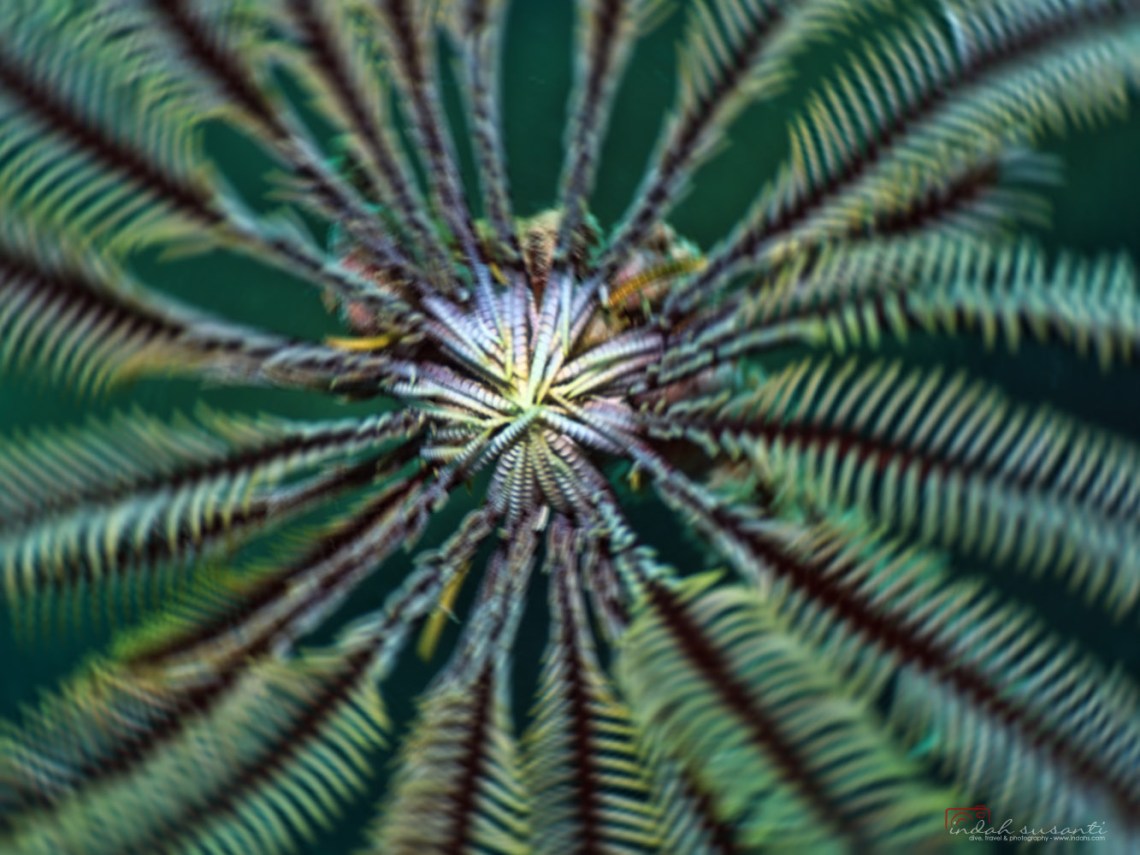Crinoids Facts: Feather Stars and Sea Lilies
29th edition of Marine Life monthly post. Marine Life post published every 19th of the month. It aims to share information on marine life species and to promote their conservation. All images and video in this post are taken by Indah Susanti unless stated otherwise.

GIF clip by Natsdorf Tumblr
You might have seen the video of swimming feather star on social media, it was captured by Els van den Eijnden in Padang Bai (Bali, Indonesia) and published in Youtube in November 2016 – Feather Starfish (Crinoid) in Blue Lagoon Padang Bai, Bali by Els Van Den Eijnden. Somehow, the National Geographic on its article in December 2016, claimed the video was made in Thailand, while Dailymail got it right by mentioning the original source, that it was taken in Bali (Indonesia). Sometimes we can not just depend on one news source, can we? 😉
Anyway, the truth that I know for sure: you can see the feather stars in Indonesia and Thailand. This incredible species is actually a marine animal called crinoid. They are common to see in shallow waters and as well in deep waters.
There are two types of crinoid, the crinoid that have stalks called as sea lily; and the ones that have no stalks called as feather star. Instead of having stalks, the feather star has parts that look alike roots. The sea lily image here is part of images collection from the NOAA Photo library.


The crinoids have various different colors and they are gorgeous. They are varied in species and we can identify them from their colors.



Just like the star fish and the sea urchin, this marine animal is confusing to look at. Which are their faces, arms and mouth? These questions come to my mind, but then I realize, I asked those questions because I considered that all lives in this planet has similar features. It’s not the case in the ocean life. Following is a diagram from Livingstone, shared by Trisdik about the anatomy of the feather star and the sea lily.
They eat food particles of the sea water and filter the food through their arm that has the sticky part. Their arm, similar to the starfish, can regenerate.

The crinoid provides protection to the commensal shrimps that live in the crinoids. The shrimp camouflaged its skin color to the color of its host. I also have witnessed the ghost pipefish kept swimming near to the crinoid and camouflaged its colors to the crinoid’s color.


The way its swim has captured many people’s interests. I was lucky that I have seen the swimming feather stars multiple times during our dives in Indonesia and the Philippines. One of the occasions was captured by our GoPro video. It was not as good as the movie captured by Els van den Eijnden, but yes, you can see them swimming around and it’s fun to see them!



Beautiful Pictures … ❤️❤️❤️
The sea lily is so lovely
aku jadi penasaran ama sea lily indah kece gitu dan warnanya unik
Wonderful shots!
The ocean lily is so lovely..Wonderful shots!..
Bonjour Indah, merci pour tes magnifiques photos, les fonds marins sont d’une grande beauté avec de magnifiques couleurs 🙂
Mes amitiés
Nice! Crinoids are among the most common organisms we see during our dives. However, we haven’t seen free-swimming crinoids yet; every crinoid we saw is anchored to a coral or rock. Would love to see a graceful swimming crinoid.